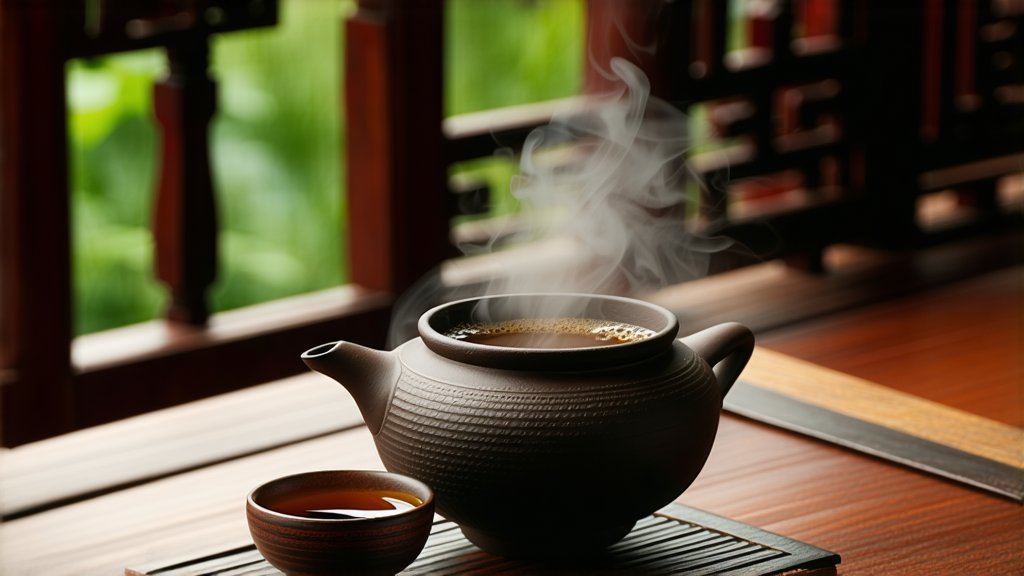
Pu-erh tea, a distinguished variety within the esteemed family of Chinese black teas, holds a unique place in the hearts of tea enthusiasts and connoisseurs alike. Originating from the Yunnan province in southwestern China, this tea is more than just a beverage; it's a cultural artifact that has been cherished for centuries. Known for its deep, rich flavors and potential health benefits, Pu-erh tea offers an experience that transcends mere consumption, inviting us into a world steeped in history and tradition.
The origins of Pu-erh tea can be traced back over a thousand years to the Tang dynasty, with its popularity soaring during the Ming and Qing dynasties. It was initially cultivated as a tribute tea, reserved exclusively for the imperial court. Over time, however, it found its way into the hands of common folk, becoming a staple in daily life and an integral part of Chinese culture. Today, Pu-erh tea stands as a symbol of the harmonious relationship between man and nature, reflecting the philosophy of balance and tranquility deeply rooted in Chinese thought.
There are two primary types of Pu-erh tea: Raw (Sheng) and Ripe (Shou). Raw Pu-erh undergoes a natural fermentation process, which allows it to age gracefully over time, developing complex and nuanced flavors. As it matures, the tea transforms, acquiring a deeper character that reflects the terroir of its origin. On the other hand, Ripe Pu-erh is subjected to an accelerated fermentation process involving controlled humidity and temperature, resulting in a smoother, mellower taste that can be enjoyed sooner. Both types share a common lineage but offer distinct experiences, catering to different palates and preferences.
The art of making Pu-erh tea is as intricate as its flavor profile. Harvested primarily from the leaves of the Camellia sinensis plant, the journey from leaf to cup involves several meticulous steps. After being plucked by hand, the leaves are withered under the sun or in shaded areas to reduce moisture content. They are then pan-fired briefly to halt oxidation before being rolled into tight spirals. For Raw Pu-erh, this marks the end of processing, allowing the tea to rest and age naturally. In contrast, Ripe Pu-erh undergoes additional steps, including wetting and piling the leaves under controlled conditions to encourage microbial activity, followed by repeated turning and airing until the desired level of fermentation is achieved.
Brewing Pu-erh tea is an art form that requires patience and precision. To fully appreciate its depth and complexity, one must adhere to certain guidelines. Begin by warming your teapot or gaiwan (a traditional Chinese lidded bowl used for brewing tea) with hot water to eliminate any residual odors and to preheat the vessel. Use approximately 5 grams of tea per 100ml of water, adjusting according to personal preference. Rinse the tea leaves briefly with boiling water to awaken them and discard this initial infusion. Subsequent infusions should be made with water at a temperature ranging from 90°C to 95°C (194°F to 203°F), depending on the type and age of the tea. Steep for 15 to 30 seconds for the first infusion, gradually increasing the steeping time for subsequent brews to extract the full spectrum of flavors.
Appreciating Pu-erh tea goes beyond simply drinking it; it involves engaging all the senses in a mindful practice. Start by observing the tea leaves unfurl gracefully in the water, releasing their essence. Notice the color of the liquor, which can range from bright amber to deep reddish-brown, indicative of the tea's age and processing method. Inhale deeply to capture the aroma, which may reveal earthy, woody notes intertwined with hints of fruitiness or floral undertones. As you sip, let the tea coat your tongue and explore its texture—whether it feels velvety or more robust. Savor the aftertaste, which often lingers pleasantly, revealing layers of flavor that evolve with each infusion.
In conclusion, Pu-erh tea embodies the essence of Chinese tea culture, offering a profound connection to history, nature, and the art of living. Its unique production methods and aging potential make it a fascinating subject for exploration and appreciation. Whether you are drawn to the subtle elegance of Raw Pu-erh or the immediate gratification of Ripe Pu-erh, this extraordinary tea promises a journey of discovery that enriches both the palate and the soul.